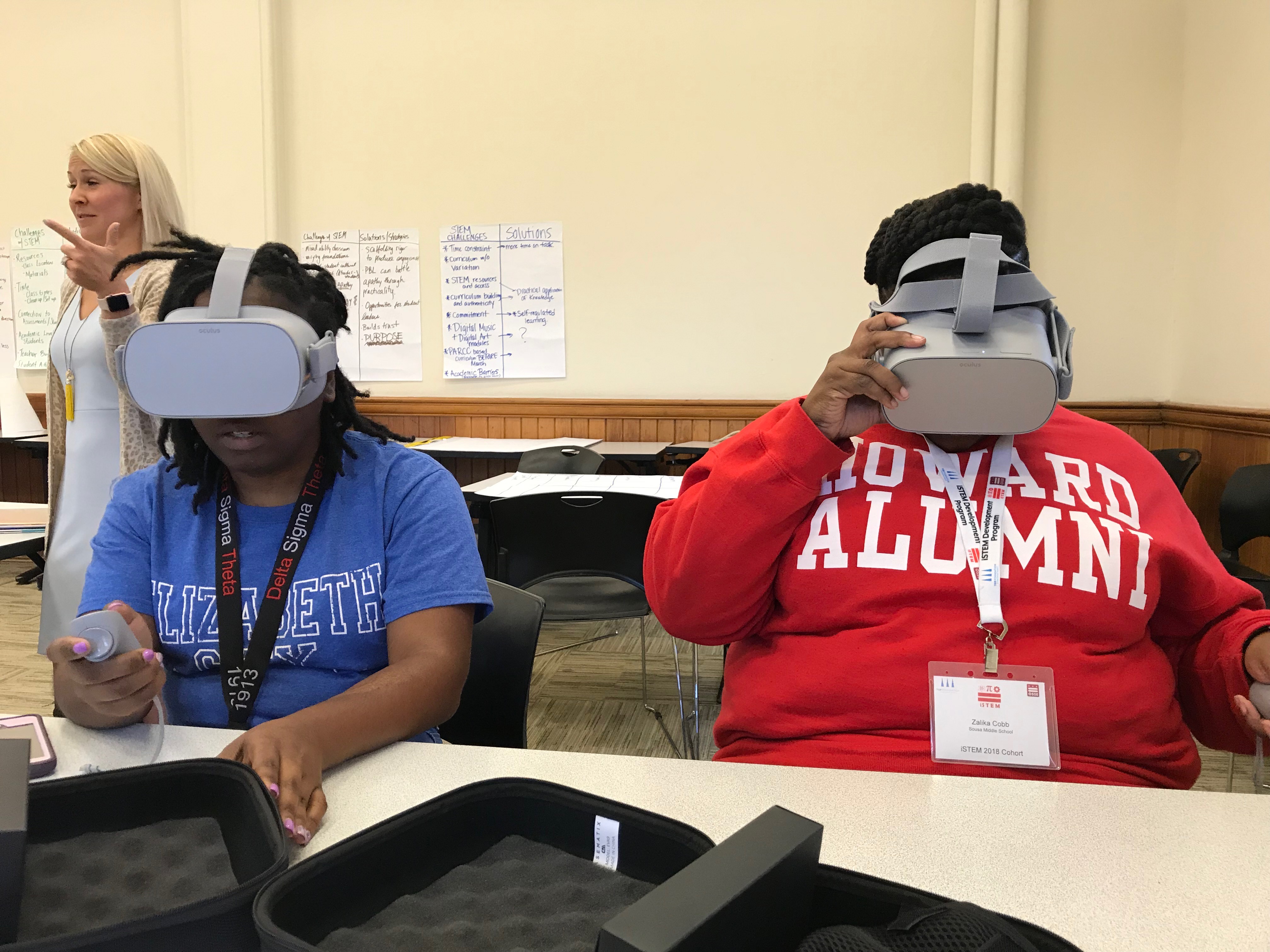Integrated STEM (iSTEM) professional development series makes impact

With the combination of dedicated science, technology, engineering and math (STEM) educators, leaders and a professional learning series on student-centered instructional practices the Integrated STEM (iSTEM) professional development series was born. This professional development series was coordinated by both TGR Foundation, a Tiger Woods Charity, and the Office of the State Superintendent of Education (OSSE) in Washington, DC. OSSE provided financial support for the iSTEM Development Program.
During winter, spring and summer of 2018, five Washington, DC schools participated in iSTEM, working to prepare STEM academic professionals to engage students in real-world connections to the content they are learning. Since the start of the series, all five schools have completed the iSTEM program and are currently in the process of implementing the initiatives developed through their strategic goal setting.

In September, participating iSTEM schools had one more site visit, the last of three, to show their mentor and other iSTEM facilitators the initiatives they had implemented as a result of their iSTEM strategic planning. Visitors to two elementary schools, one middle school and one career academy were able to see a lot of great new programs in place.
During the visit, we observed students at Sousa Middle School participating in an integrated project-based learning unit focused on studying the World Trade Center attacks on 9/11 and remembering the victims affected. Students also learned about the history of the tragedy, studied structures of buildings and how they respond to stresses and made memorial art projects to celebrate the memory of lives lost. This project was very meaningful for teachers and students alike and allowed students to study multiple perspectives of a single issue.

At the Latin American Youth Center (LAYC) Career Academy, teachers were involved in a weekly professional learning community to integrate project-based learning at their school. Teachers and leaders from each program at the school including Information Technology, Medical Assistance and GED/College Preparation were represented in this professional learning community. Their goal is to align the college bound classes with the IT and MA career tracks using real-world projects that capture the imagination of these soon-to-be professionals. Dr. Jacqueline Fernandez-Romero, Principal of LAYC Career Academy shared her appreciation for the iSTEM’s impact on their school.
“Thanks to the coaching and resources received from iSTEM, we can continue to provide excellent education in the classroom with the addition of students being more engaged and being able to develop additional skills that are relevant to their future careers,” she said. “We will be able to create opportunities and give resources to teachers, so they can become experts with project/problem-based learning initiatives.”

At John Burroughs Elementary School (JBES), visitors were treated to students enjoying their time in the STEM lab, a classroom where students get to integrate STEM subjects and spend a lot of time building projects to meet a design challenge. This is a favorite class of many of the JBES students and in fact, according to Kristina Kellogg, Assistant Principal and former STEM Program Director at JBES, “based on a 2018 survey ninety-four percent of our Kindergarten through fifth grade students loved or liked the STEM lab. One of our fifth graders stated, ‘I’m looking forward to being a scientist this year.’ One of our first graders stated, ‘I love the lab because it’s my favorite.’ At Burroughs ES students come with curiosities and leave with confidence.”

When asked about JBES participating in iSTEM, Ms. Kellogg remarked “Participating in the 2018 iSTEM has made a tremendous impact on our overall school approach to STEM. Throughout the seven months of professional development our staff took a deep dive into various components of NGSS, 21st Century Skills, real world connections and interdisciplinary subjects. This experience has narrowed the focus of our school-based STEM Framework and helped assess our overall areas of growth and strengths.”

These examples, along with those from the other two schools, highlight the persistence and hard work of the 2018 iSTEM cohort to bring high quality STEM curricula to all of their students. Having had the pleasure of working with all of the members of these schools for the last seven months, I for one know their students are well cared for and am excited to see how all of these initiatives will continue to grow. While we are at the end of iSTEM, I am confident we are seeing the beginning of exciting new STEM programs at these schools.
Redefining what it means to be a champion.


